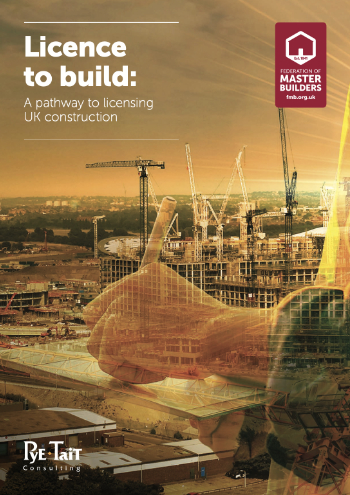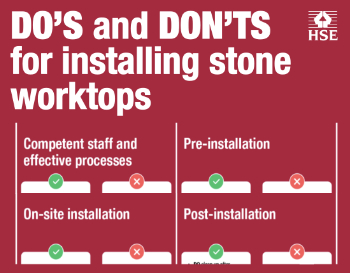The Trillion Dollar Business Opportunity in Infrastructure
Infrastructure represents one of the world’s largest investment opportunities—developers are clamoring for projects and investors are eager to partner. Government leaders have the power to launch infrastructure initiatives that can spur economic activity and improve the lives of millions.
Take Senegal, for example. Poor road infrastructure and severe traffic congestion were costing Senegal nearly 5% of its annual GDP every year. The Dakar-Diamniadio Toll Road, which now links Dakar to surrounding cities, reduces commute time from more than two hours to less than 30 minutes, impacting more than two million Senegalese. In Australia, the construction of Sydney’s Westlink M7 motorway sparked industrial activity. In 2005, more than two-thirds of the two million square meters of industrial land under development in Sydney was around the M7 corridor. The motorway has served as an anchor project in the government’s plan to develop western Sydney into an industrial and employment hub.
And yet, over the next 15 years, global investment in infrastructure is projected to fall short by approximately $1 trillion per year.
In its 2016 meeting, the B20 (a coalition of international business leaders that develop policy recommendations for G20 leaders) assembled an infrastructure taskforce to identify what should be done to reinvigorate private investments in public infrastructure and close the infrastructure gap.
Here are the top takeaways.
1. It’s Not About the Money
Investors are ready to allocate funds—but there’s a shortage of attractive, bankable projects in the pipeline. To increase and accelerate the pipeline, governments need to map out a long-term vision, rigorously prioritize projects, prepare solid go-to-market strategies, and invest in key capabilities. The South Korean Public and Private Infrastructure Investment Management Center (PIMAC) is an example of how a country successfully took steps to strengthen its pipeline. PIMAC, an independent and professional entity, vets proposed infrastructure projects, assesses return on investment, and provides advice on improving project design. Through rigorous analysis, PIMAC has screened out almost 50% of potential projects (versus just 3% previously), saving South Korea an estimated $103 billion over the past 15 years. This kind of rigorous analysis helps ensure that a strong portfolio of high-quality projects is available to potential investors.
2. Accelerate, Accelerate, Accelerate
To pave the way for high-impact infrastructure growth, it’s critical to eliminate the costly bottlenecks in preparation, procurement and approval processes that routinely delay infrastructure projects. The Development Bank of South Africa (DBSA), for example, created a specific advisory business to assist project owners in de-bottlenecking high-priority infrastructure projects. The DBSA is currently working with several governments in southern Africa to accelerate infrastructure projects in the North-South Corridor, an economic route connecting Durban to Dar es Salaam. This Corridor is creating 574,000 jobs in the region and uplifting thousands of citizens caught below the poverty line.
3. Brown Is the New Black
Private investors are keenly interested in brownfield assets, and governments can sell brownfield projects in order to fund greenfield projects. By pursuing this strategy, Australia is expected to free up $24 billion for new infrastructure investments over the next five years (through its Australia Asset Recycling Initiative). The Australian Capital Territory Government, for example, plans to sell nearly $300 million worth of public assets and reinvest the proceeds in the Canberra Capital Metro light-rail project, which is expected to deliver approximately $750 million in economic benefits in stage one alone. Similarly, the Indian government recently announced that it will auction the rights to collect tolls on portions of its national highways in order to finance new highways (and maintain existing highways as well). Selling brownfield projects to fund greenfield projects is a clear win-win for governments and investors.
4. De-Risk to Enable Private Finance
Industry leaders see massive potential in infrastructure—but they also see risk, especially in emerging and frontier markets. The key is to allocate risk to the contracting party best equipped to handle it. Industry leaders are also looking to multilateral development banks (MDBs) to identify whether their risk mitigation programs (such as political risk insurance, policy guarantees, and project guarantees) can be expanded, and whether private-sector arms of MDBs can increase co-investment with private investors. This provides additional comfort for investors and improves their chances of gaining a seat at the table if governments make regulatory or policy changes.
5. Digital Technology Is Here
Digital innovation is redefining what’s possible in construction and infrastructure projects. Widespread use of digital technology can reduce lifecycle costs by almost 20%. Innovative materials, smart equipment, automated processes, 3D printing, and big data are poised to help companies build better, cheaper, faster and safer than ever before. Skanska, a multinational construction company, created “Flying Factories”, establishing temporary factories close to construction sites to reduce construction time by 65% and slash labor costs by 50%. To foster such innovation, governments need to establish innovation-friendly regulations and policies and reward technology solutions that reduce lifecycle costs. Singapore, through its Construction Productivity and Capability Fund, partially reimburses companies that deploy building information modeling (BIM) software, hardware, equipment, and machines that improve productivity by at least 30%.
6. Interconnectivity Is the Next Big Frontier
Interconnected infrastructure projects can integrate economic clusters across multiple countries, remove trade barriers, and optimize asset networks. Existing initiatives like the Trans-European Networks and the Central American Electrical Interconnection System have delivered tremendous benefits in their respective regions, while new initiatives, such as One Belt, One Road, have the potential to transform economic prospects for dozens of countries by laying down critical, integrated infrastructure. The planning and execution of these projects is a major challenge because they involve wide-ranging stakeholder interests, varying regulatory, legal, and political environments, and engineering complexity. Yet the potential gains from these initiatives require that we find ways to tackle the challenges. Industry can work with governments to turn challenges into opportunities by developing innovative solutions through strategic partnerships.
By working together, business and governments can turn the annual trillion dollar infrastructure gap intro a trillion dollar opportunity. Now is the time—for both governments and businesses—to move from identifying issues to initiating change.
Post originally published on linkedin.com.
- Written by
Jeff Chua, Senior Partner and Managing Director, The Boston Consulting Group
This article was also published on the Future of Construction Knowledge Sharing Platform and the WEF Agenda Blog.
--Future of Construction 13:30, 19 Jun 2017 (BST)
Featured articles and news
Reporting on Payment Practices and Performance Regulations
Approved amendment coming into effect 1 March 2025.
A new CIOB TIS on discharging CDM 2015 duties
Practical steps that can be undertaken in the Management of Contractors to discharge the relevant CDM 2015 duties.
Planning for homes by transport hubs
Next steps for infrastructure following the updated NPPF.
Access, history and Ty unnos.
The world’s first publicly funded civic park.
Exploring permitted development rights for change of use
Discussing lesser known classes M, N, P, PA and L.
CIOB Art of Building 2024 judges choice winner
Once Upon a Pass by Liam Man.
CIOB Art of Building 2024 public choice winner
Fresco School by Roman Robroek.
HE expands finance alliance to boost SME house building
Project follows on from Habiko public-private place making pension partnership for affordable housing delivery.
Licensing construction; looking back to look forward
Voluntary to required contractors (licensing) schemes.
A contractor discusses the Building Safety Act
A brief to the point look at changes that have occurred.
How orchards can influence planning and development.
CIOB Construction Manager of the Year award
Shortlist set to go head-to-head for prestigious industry title.
HSE simplified advice for installers of stone worktops
After company fined for repeatedly failing to protect workers.
Co-located with 10th year of UK Construction Week.
Time for knapping, no time for napping
Decorative split stone square patterns in facades.
A practical guide to the use of flint in design and architecture.

























